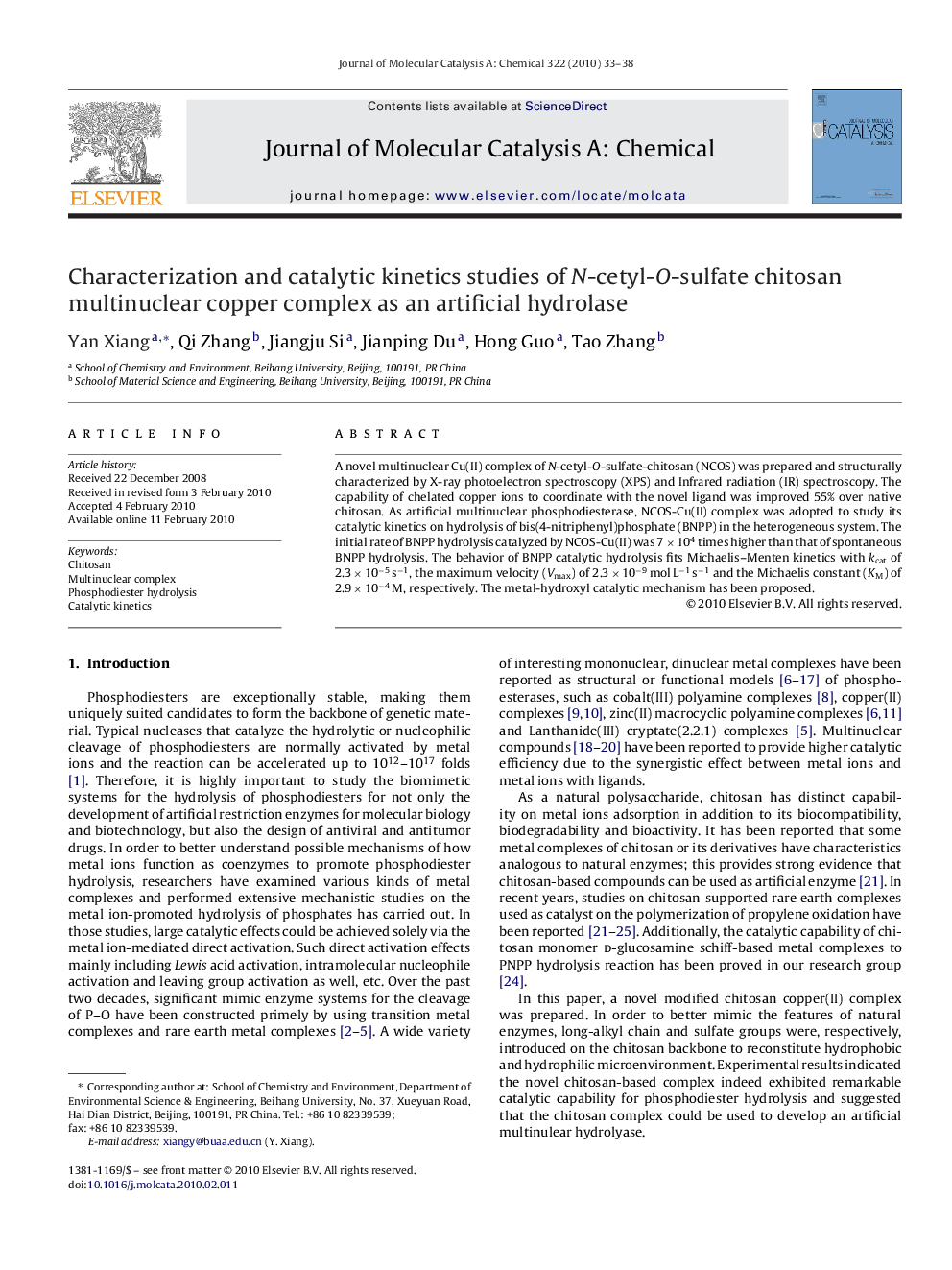| Article ID | Journal | Published Year | Pages | File Type |
|---|---|---|---|---|
| 66818 | Journal of Molecular Catalysis A: Chemical | 2010 | 6 Pages |
A novel multinuclear Cu(II) complex of N-cetyl-O-sulfate-chitosan (NCOS) was prepared and structurally characterized by X-ray photoelectron spectroscopy (XPS) and Infrared radiation (IR) spectroscopy. The capability of chelated copper ions to coordinate with the novel ligand was improved 55% over native chitosan. As artificial multinuclear phosphodiesterase, NCOS-Cu(II) complex was adopted to study its catalytic kinetics on hydrolysis of bis(4-nitriphenyl)phosphate (BNPP) in the heterogeneous system. The initial rate of BNPP hydrolysis catalyzed by NCOS-Cu(II) was 7 × 104 times higher than that of spontaneous BNPP hydrolysis. The behavior of BNPP catalytic hydrolysis fits Michaelis–Menten kinetics with kcat of 2.3 × 10−5 s−1, the maximum velocity (Vmax) of 2.3 × 10−9 mol L−1 s−1 and the Michaelis constant (KM) of 2.9 × 10−4 M, respectively. The metal-hydroxyl catalytic mechanism has been proposed.
Graphical abstractIn the hydrolysis of bis-(4-nitrophenyl)phosphate (BNPP) catalyzed by N-cetyl-O-sulfate-chitosan Cu(II) complex, N-cetyl-O-sulfate-chitosan constructed hydrophobic microenvironment for the catalysis and enhanced the interactions between Cu(II) ions and BNPP. Copper-hydroxide associates with substrate to form the intermediate. Then Cu(II)-bound hydroxyl group act as strong nucleophile to attack the P–O bond.Figure optionsDownload full-size imageDownload high-quality image (27 K)Download as PowerPoint slide
